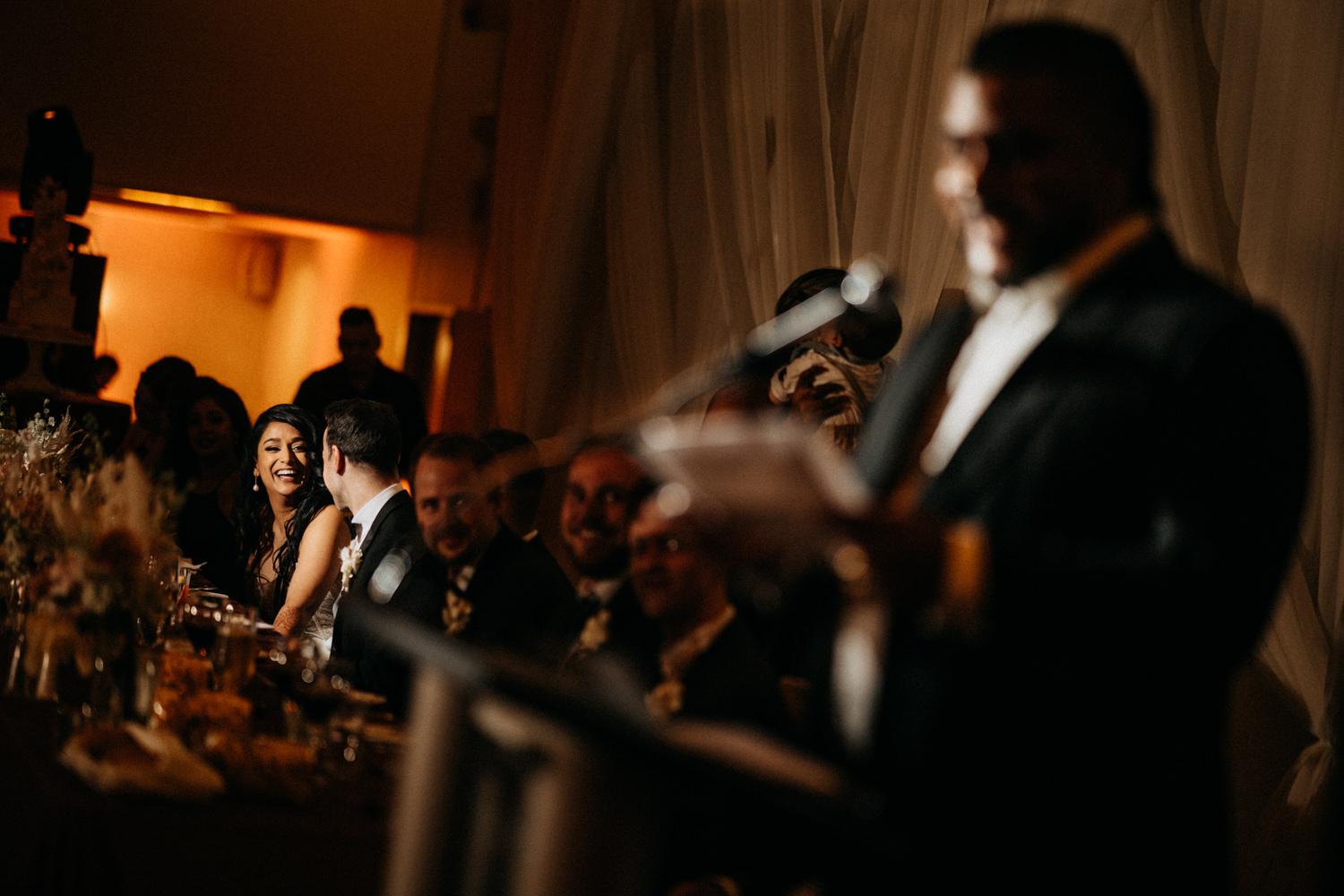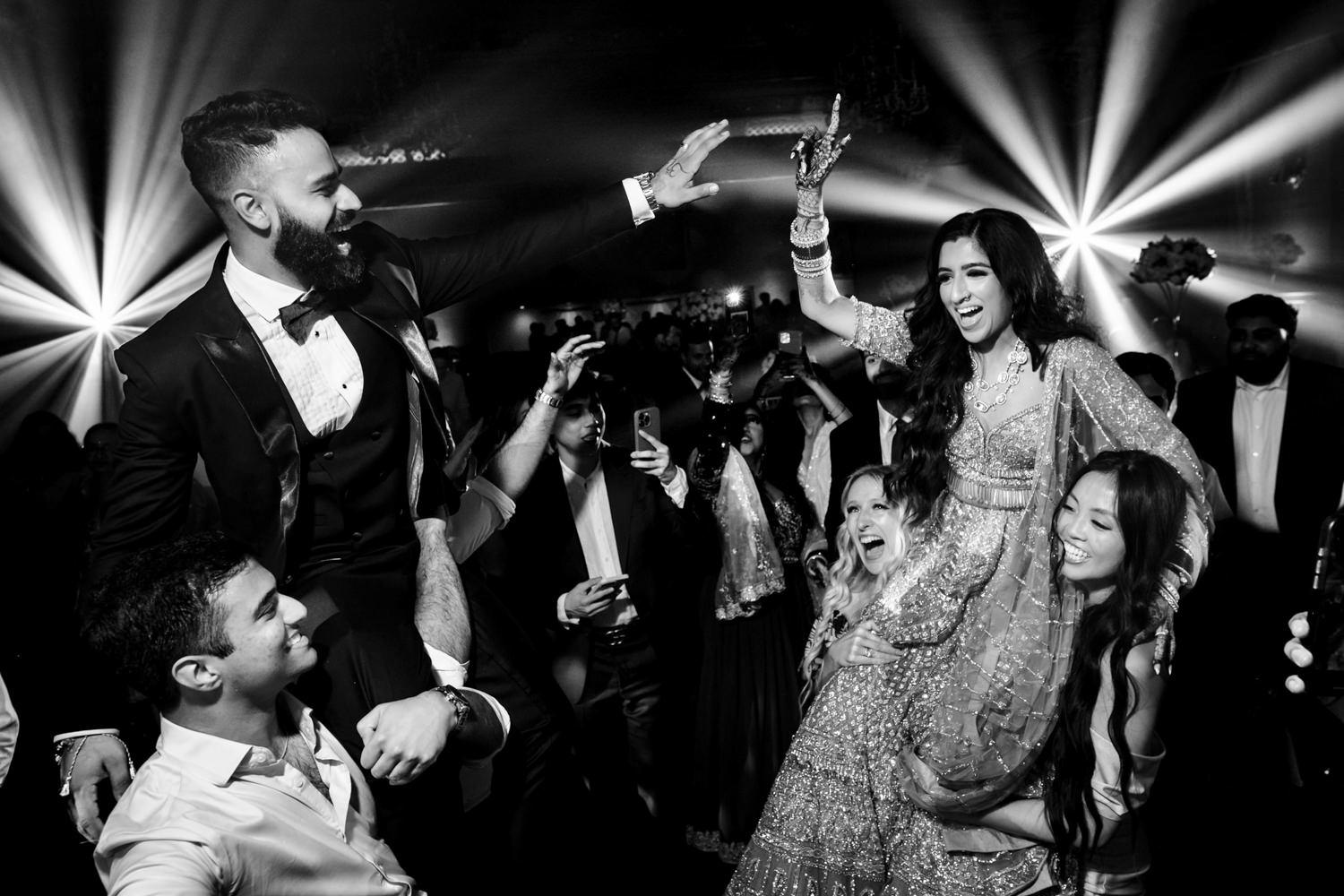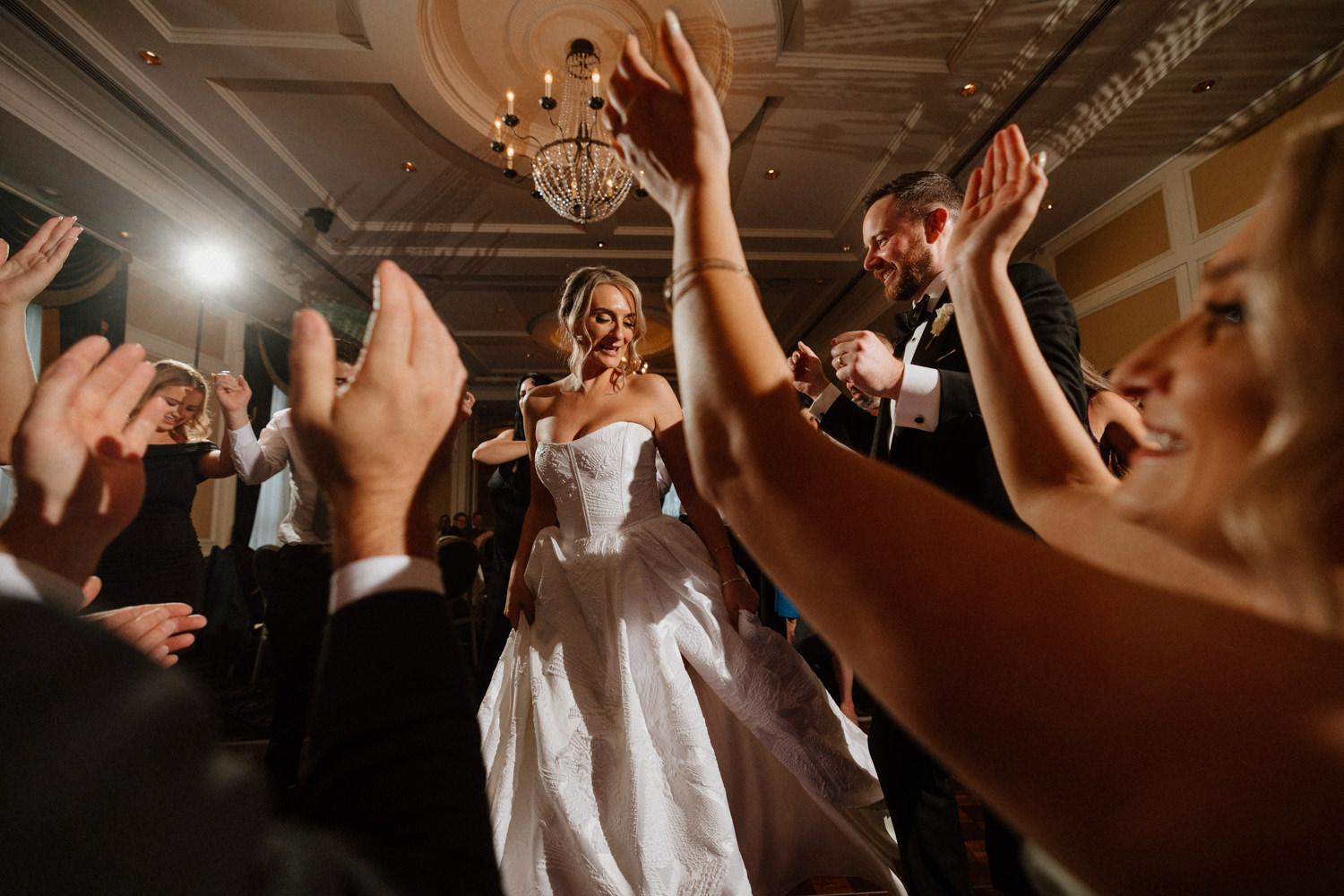Whether whispered vows or booming dance tracks, sound has always shaped the wedding experience. From ancient blessings to best man roasts, music and speeches help us feel—and remember.
Weddings are multisensory, but music and spoken words carry special power. Long before couples were making Spotify playlists or hiring DJs, music played a sacred, symbolic role in wedding ceremonies. And long before speechwriting apps and viral toasts, words were used to bless, honour, and even warn the newlyweds.
In Canada and around the world, wedding music and speeches continue to evolve—blending tradition, emotion, and creativity in equal measure.

The Origins: Song as Sacred Soundtrack
In ancient cultures, music was a key part of ritual and ceremony:
- Chanted blessings and hymns were common in Egyptian, Jewish, and Hindu ceremonies.
- Music invoked divine favour, marked sacred transitions, and unified the community.
- Instruments like harps, flutes, drums, or lutes were used in processions or dances.
In early Christian and Islamic weddings, music remained present—but was often religious or highly regulated, reflecting the spiritual gravity of the union.
Processional Music and Wedding Marches
The idea of specific music for entering the ceremony took shape in the 1800s:
- “Here Comes the Bride” (Wagner’s Bridal Chorus) became popular after Queen Victoria’s daughter used it in 1858.
- Mendelssohn’s Wedding March from A Midsummer Night’s Dream became a popular recessional tune.
- These formal compositions reflected the era’s emphasis on grandeur, symmetry, and tradition.
Today, many Canadian couples still choose classical processional music—while others walk down the aisle to instrumental covers of pop songs, or skip formal entrances entirely.
Reception Music: From Live Bands to Curated Playlists
In the early 20th century, live bands were the norm at weddings, especially in urban Canada.
- Jazz, big band, and crooner classics shaped reception vibes from the 1920s–50s.
- The rise of portable audio systems and DJs in the 1970s–90s shifted the landscape.
- Today’s weddings often feature personalized playlists, genre mashups, and cultural fusion sets.
Reception music now reflects identity: from ceilidhs to cumbia, Top 40 to traditional.

The History of Wedding Speeches: Blessings to Banter
The idea of speaking at a wedding goes back to ancient times:
- In Jewish and Indigenous ceremonies, elders offered blessings and wisdom as spoken guidance.
- In ancient Rome, formal speeches sometimes warned the couple about their marital duties.
- In Christian ceremonies, sermons included reflections on love, faith, and submission (especially for the bride).
These speeches were public, ceremonial, and structured. But that began to change in the 20th century.
The Rise of the Toast: Humour, Memory, and Emotion
By the mid-1900s, wedding speeches became less formal and more personal:
- The father of the bride speech evolved into a heartfelt (or humorous) moment.
- The best man’s speech became known for its mix of roasting and reminiscing.
- Speeches by the maid of honour, siblings, or even the couple themselves became common.
Today, some couples skip formal speeches entirely—or swap them for video messages, group toasts, or microphone-free storytelling.

Modern Trends in Canadian Weddings
Canadian couples today embrace a wide range of approaches:
Music:
- Live acoustic performers for intimate vibes
- Fusion playlists for multicultural weddings
- Silent discos, violinists with loop pedals, or DJ/live hybrids for immersive experiences
Speeches:
- LGBTQ+ weddings often include dual toasts or moments that celebrate chosen family
- Multilingual weddings may offer speeches in multiple languages
- Couples may create a "no open mic" policy to manage flow and reduce pressure
Photographers and the Sound of Emotion
While music and speeches aren’t visible, they shape the emotional energy of the day—and photographers tune in closely:
- Tearful reactions during a parent’s toast
- Laughing group shots during a best man joke
- Wide crowd shots during the couple’s grand entrance or choreographed first dance
The best wedding photos often correspond to musical highs and verbal lows—the unseen becomes unforgettable.

Related Reading in the History of Weddings Series:
- The History of the First Dance
- The History of the Wedding Reception
- The History of Wedding Superstitions
- The History of Wedding Planning in Canada
Continue Planning Your Wedding
Ready to dive into the details? How to Find the Perfect Wedding Photographer: The Ultimate Guide to Making the Right Choice